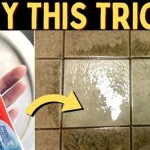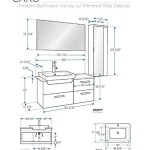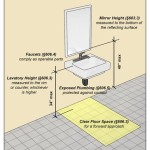Repairing A Leaking Bathroom Sink Faucet: A Comprehensive Guide
A leaking bathroom sink faucet is a common plumbing problem that can waste water and lead to higher utility bills. Fortunately, it's a relatively simple repair that can be completed in a few steps. This comprehensive guide will provide you with step-by-step instructions on how to repair a leaking bathroom sink faucet, covering both cartridge-type and compression-type faucets.
Identifying the Type of Faucet
The first step in repairing a leaking faucet is to identify the type of faucet you have. There are two main types of bathroom sink faucets: cartridge-type and compression-type.
Cartridge-type faucets have a single handle that controls both the flow of water and the temperature. They are the most common type of faucet found in modern bathrooms.
Compression-type faucets have two handles, one for hot water and one for cold water. They are an older type of faucet, but they are still found in some homes.
Tools and Materials You'll Need
Once you have identified the type of faucet you have, you will need to gather the necessary tools and materials for the repair.
- Adjustable wrench
- Allen wrench (for cartridge-type faucets)
- Phillips head screwdriver
- Flat head screwdriver
- New faucet cartridge (for cartridge-type faucets)
- New faucet washers (for compression-type faucets)
- Plumber's tape
- Bucket or bowl
Step-by-Step Repair Instructions
Cartridge-Type Faucet
- Turn off the water supply to the faucet. There will be two shut-off valves under the sink, one for hot water and one for cold water. Turn both valves clockwise until they are fully closed.
- Remove the handle. There will be a small screw on the side of the handle. Use a Phillips head screwdriver to remove the screw and then pull the handle straight up.
- Remove the cartridge. Use an Allen wrench to loosen the screw that holds the cartridge in place. Once the screw is loosened, you can pull the cartridge straight up and out of the faucet body.
- Inspect the cartridge. Look for any signs of damage or wear. If the cartridge is damaged, you will need to replace it.
- Install the new cartridge. Insert the new cartridge into the faucet body and tighten the screw. Be sure to use plumber's tape on the threads of the screw.
- Reinstall the handle. Place the handle back on the faucet body and tighten the screw. Be careful not to overtighten the screw.
- Turn on the water supply and check for leaks. Slowly turn on the water supply and check for any leaks. If there are any leaks, tighten the screws on the cartridge and handle until the leak stops.
Compression-Type Faucet
- Turn off the water supply to the faucet. There will be two shut-off valves under the sink, one for hot water and one for cold water. Turn both valves clockwise until they are fully closed.
- Remove the handle. There will be a screw on the top of the handle. Use a Phillips head screwdriver to remove the screw and then pull the handle straight up.
- Remove the packing nut. Use an adjustable wrench to loosen the packing nut. The packing nut is located around the base of the handle.
- Remove the stem. Use an adjustable wrench to loosen the stem. The stem is located inside the packing nut.
- Inspect the washer. The washer is located on the end of the stem. Look for any signs of damage or wear. If the washer is damaged, you will need to replace it.
- Install the new washer. Place the new washer on the end of the stem. Be sure to use plumber's tape on the threads of the stem.
- Reinstall the stem. Insert the stem into the faucet body and tighten the packing nut. Be sure to use plumber's tape on the threads of the packing nut.
- Reinstall the handle. Place the handle back on the faucet body and tighten the screw. Be careful not to overtighten the screw.
- Turn on the water supply and check for leaks. Slowly turn on the water supply and check for any leaks. If there are any leaks, tighten the packing nut until the leak stops.
Conclusion
Repairing a leaking bathroom sink faucet is a relatively simple task that can be completed in a few steps. By following the instructions in this guide, you can quickly and easily fix the leak and save yourself the cost of calling a plumber.

Properly Fixing A Leaky Sink Faucet Wallside Windows

How To Fix A Leaky Faucet True Value

How To Fix A Leaky Bathroom Sink Faucet

How To Fix A Leaky Faucet The Home Depot

5 Reasons Your Faucet Is Dripping Water How To Fix It

Part 1 Of 2 How To Fix A Dripping Faucet

5 Reasons Your Faucet Is Dripping Water How To Fix It

Part 1 Of 2 How To Fix A Dripping Faucet

How To Fix A Leaky Faucet The Home Depot

How To Fix A Leaking Bathroom Faucet Repair Faucets Bathtub







